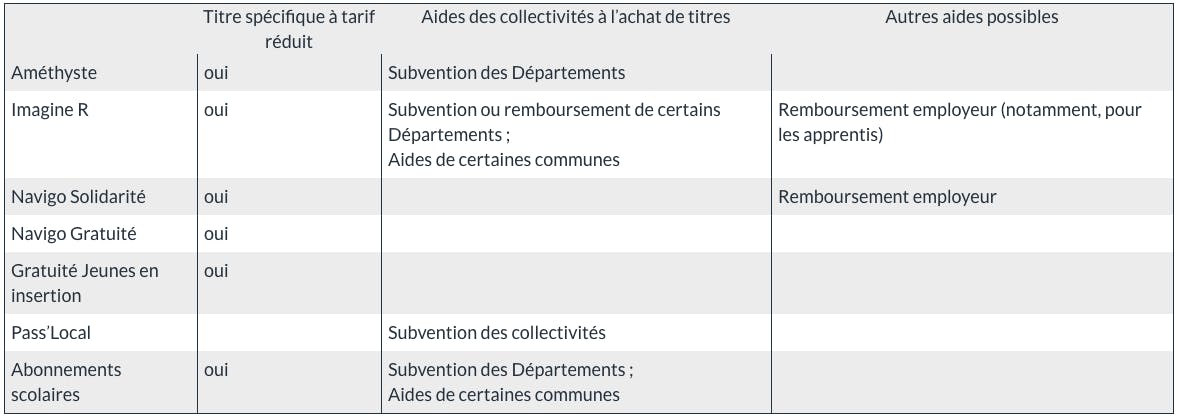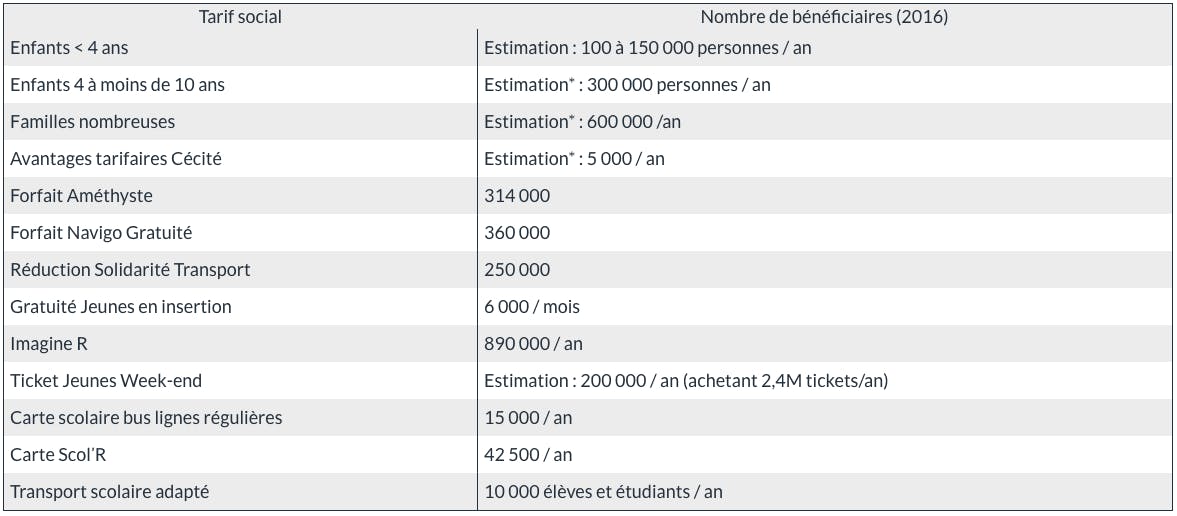People in social and financial difficulties
Mobility vouchers
The first measures to help people with mobility date back to 1998, with the creation of mobility vouchers, which allow STP partners to intervene in favour of the mobility of job seekers by distributing transport vouchers worth €4 or €8 that beneficiaries can exchange for full-fare transport tickets in the Paris region. 30% of these mobility vouchers are financed by the STP, and 70% by its funding partners (mainly the State, the Region, the Departments and the Assedic).
As the Solidarity Transport Pricing system has developed, the scope of the beneficiaries of the mobility vouchers has been reduced (transfer of beneficiaries of the CMU-C and recipients of the ASS, the RMI and the API to the Solidarity Transport Pricing system), so that the mobility vouchers are now mainly distributed by the Local Missions and the PAIO (Permanences d'Accueil, Information and Guidance Programme) only for young people aged 16 to 25 in the Ile-de-France region in the integration process to help them with their occasional trips (Île-de-France Mobilités-Région funding). The Department of Val-de-Marne also distributes them to young people under 25 years of age who are not assisted by the Region, to recipients of the return to work allowance (ARE) at a minimum rate, and to very disadvantaged people in the form of one-off assistance after evaluation by the social action service.
Transport Solidarity Pricing
The SRU law of 13 December 2000 requires urban transport authorities to implement discounts of at least 50% on transport tickets for people with resources below the ceiling giving entitlement to the CMU-C (universal – complementary medical coverage).
In application of this law, Île-de-France Mobilités created in 2001 the Solidarité Transport card accessible to beneficiaries of the CMU-C or State Medical Aid (AME). This card was used to justify the purchase of tickets and tickets at a reduced rate. From 2004 onwards, it also gave the right to a 50% discount on weekly and monthly zonal season tickets. The resulting loss of revenue was covered by Île-de-France Mobilités.
In 2006, the Region wanted to intervene more proactively with people in precarious situations, on the one hand by integrating new groups for the benefit of the Solidarité Transport (recipients of the ASS, the RMI and the API), and on the other hand by increasing the level of reduction: from 50% to 75% discount on subscriptions, and the introduction of the Forfait Gratuité Transport (Navigo Gratuité) for RMI recipients (which has since become RSA) in 2007. A financing agreement was then signed between Île-de-France Mobilités and the Region, which provides for the payment by the Region to Île-de-France Mobilités of an annual flat-rate subsidy covering in part the additional revenue losses generated by the extension of the scope of the Solidarity Transport Pricing beyond the legal injunction of a 50% reduction.
In 2016, the new Council of the Île-de-France Transport Union modified the conditions for the allocation of the Solidarity Transport Tariff by excluding beneficiaries of the AME.
Free access for young people in integration
In 2010, the Ile-de-France Region, which is responsible for the training and professional integration of young people with difficulties in accessing employment, wanted to strengthen its action in favour of their mobility, which often remains an obstacle to their integration, by meeting their regular travel needs. In 2011, free training trainees in the Ile-de-France region aged 16 to 25 were created free of charge for the following schemes of the regional public service for training and professional integration: Avenir Jeunes, Regional "Qualifying" Programme, or Second Chance School.
This free travel, which takes the form of a Navigo Gratuité pass that trainees can recharge each month for the duration of their internship, is financed by the Ile-de-France Region, via a financing agreement with Île-de-France Mobilités: each monthly free payment allocated to a young person in integration is thus subject to a subsidy from the Region to Île-de-France Mobilités.
Elderly and/or disabled people
Amethyst Package
Introduced in 2013, the Amethyst packages replace the previous magnetic titles of the Amethyst, Ruby and Emerald cards. They are intended for the elderly and/or disabled people with a means test, as well as for veterans.
This scheme is special in that it is entirely financed by the Departmental Councils. The latter buy Amethyst packages from Comutitres (the GIE of carriers including RATP, SNCF and Optile), at the rate set by Île-de-France Mobilités. They then distribute them to the beneficiaries of their choice in accordance with the framework criteria defined by Île-de-France Mobilités. The conditions for awarding the permit may vary from one department to another: eligibility criteria (age, level of resources, length of residence in the department), zoning of the package distributed, whether or not the beneficiary has set up a financial contribution to obtain the permit. These differences partly explain the variability in the penetration rate of the system depending on the department.
ONAC and Blindness tariff advantages
Holders of an ONAC card (issued by the National Office for Veterans and Victims of War) and holders of a disability card with a Blindness mention in the Paris region benefit, depending on the case, from discounts on tickets or free admission for themselves and/or their companion.
Set up separately by the SNCF and the RATP in the post-war years (first reduced fare on the metro ticket for war disabled in 1930), these various fare advantages were gradually harmonized between these two public operators in the early 1980s (for beneficiaries residing in the Ile-de-France region), before being more recently extended to bus networks operated by private operators (December 2012 for blind civilians, December 2014 for war invalids).
The loss of revenue generated by the harmonisation and extension of these fare advantages is covered by Île-de-France Mobilités.
PAM specific service
PAM is a specialised on-demand transport service for people with disabilities, reserved primarily for people with a disability rate of more than 80%. It is managed at the level of the Departments by delegation of competence from Île-de-France Mobilités, but the fare remains set by Île-de-France Mobilités.
The difference between the cost of the journeys, as defined in the contracts signed between the Departments and their operator, and the fare paid by the user (which covers an average of 14% of the cost of the journey), is covered in a tripartite manner between the Department, the Region and Île-de-France Mobilités, within the limit of a previously defined ceiling. The Department has the possibility of intervening in a more proactive manner, by paying part of the tariff at the expense of the user.
Paratransit
Île-de-France Mobilités covers the school transport costs of pupils, apprentices and disabled students living in the Ile-de-France region who are unable to use public transport, either because of its inadequacy or because of the severity of their disability.
This coverage, which is subject to the favourable opinion of the Departmental House for Disabled Persons (MDPH) to which the pupil, apprentice or student is domiciled, concerns a daily round trip during the school term (except in special cases).
It can take two different forms:
- implementation of the transport service by Île-de-France Mobilités (taxis, ambulance, VSL, transport company), depending on the home, the school and the specific needs of the students
- reimbursement of transport carried out by the personal vehicle, on the basis of a kilometre rate decided by Île-de-France Mobilités, and on presentation of a certificate of attendance from the school
The State contributes largely to the financing of paratransit through the School Transport grant that it has paid annually to Île-de-France Mobilités since decentralization.


